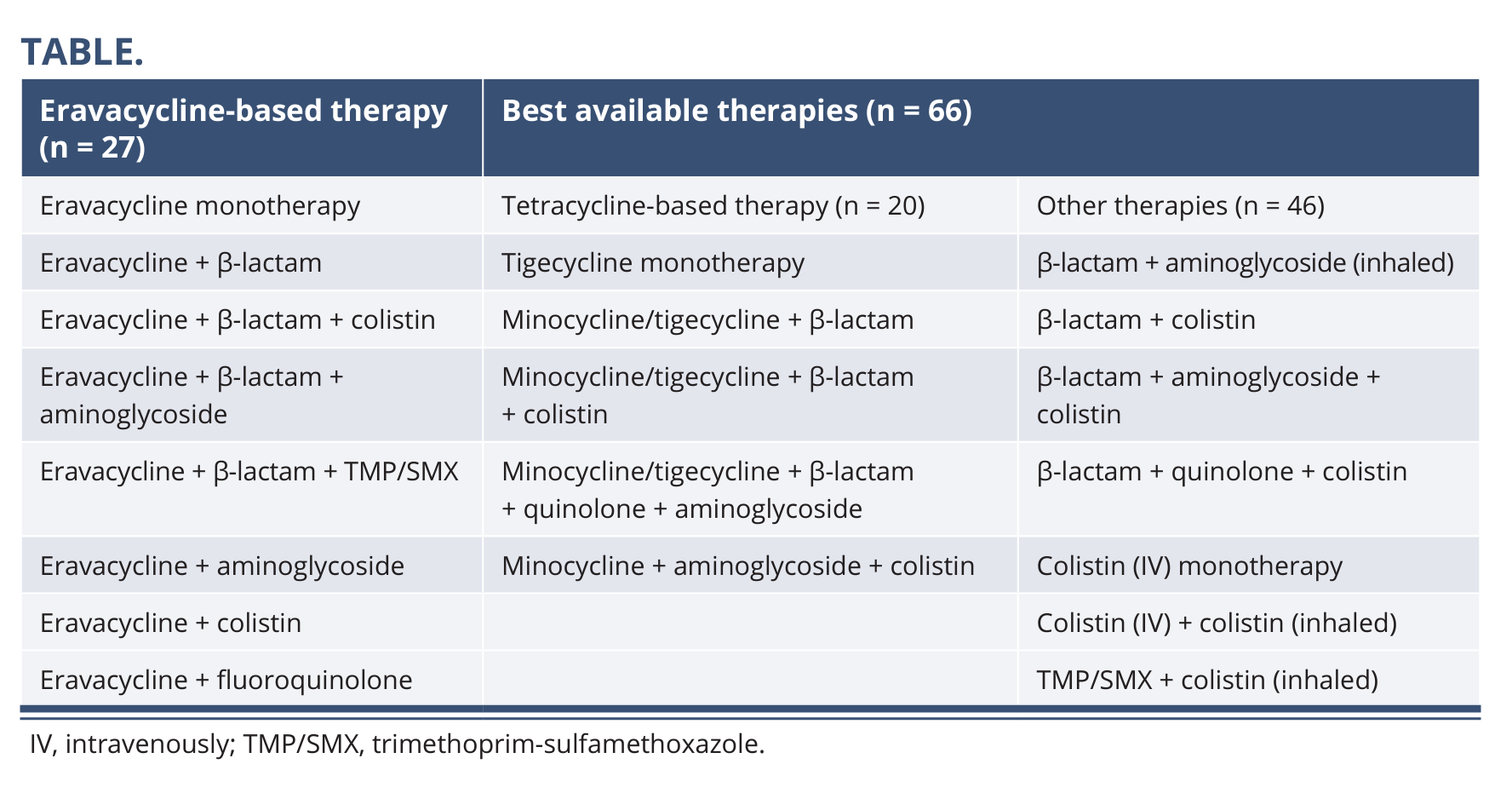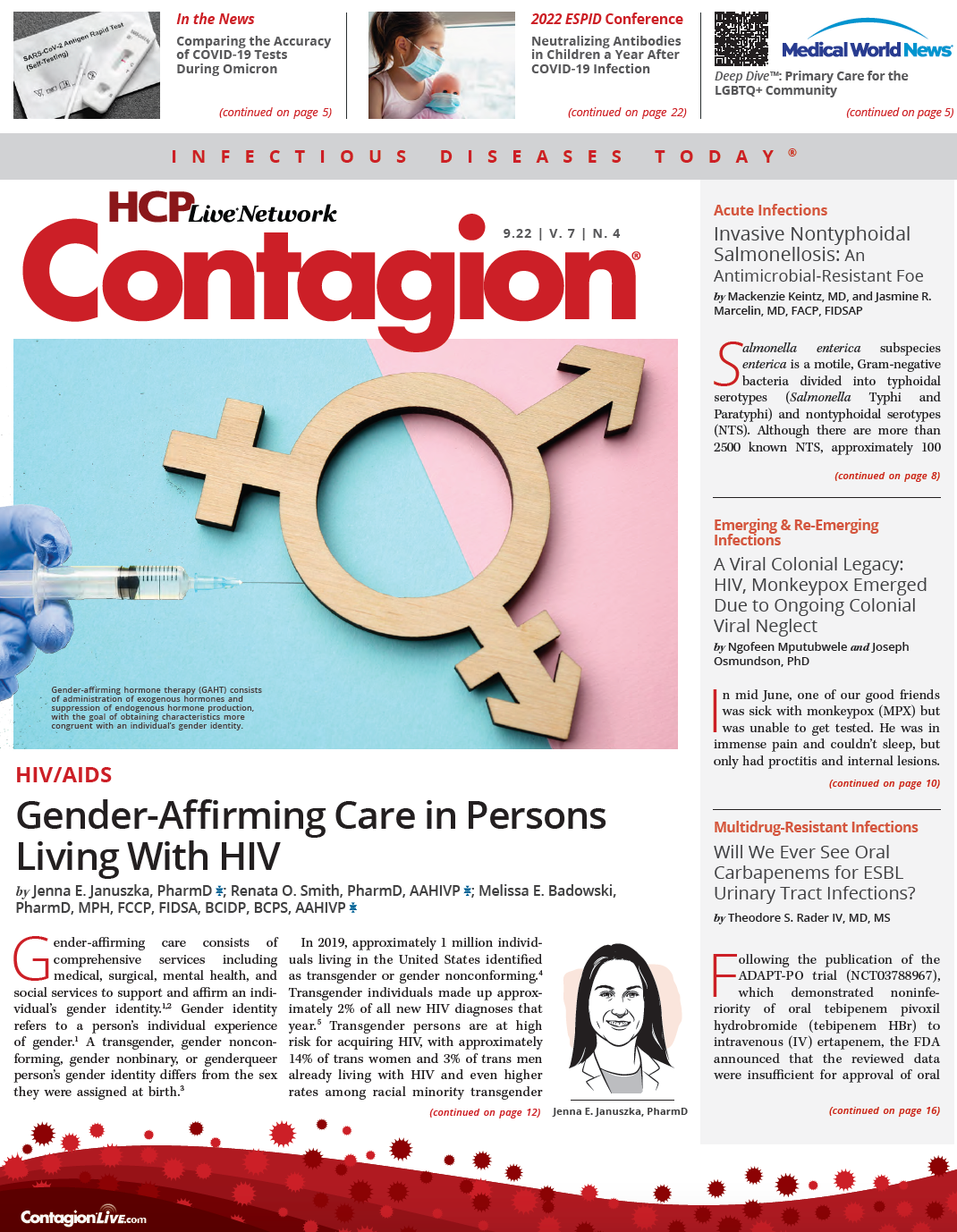Is Eravacycline Ready for Prime Time Against CRAB Pneumonia?
Eravacycline is an antibiotic that has been touted for possible treatment of difficult-to-treat resistant (DTR) Gram-negative infections. But can it tackle carbapenem-resistant Acinetobacter baumannii (CRAB) infections?

Acinetobacter baumannii is a nonfermenting, oxidase-negative, Gram-negative coccobacillus that has been associated with health care–acquired infections, including pneumonia. One of the challenges for clinicians is that A baumannii employs multiple antibiotic-resistance mechanisms, making selection of antimicrobial therapy difficult.1
Compounding this, carbapenem-resistant A baumannii (CRAB) infections result in disproportionately increased mortality compared with other carbapenem-resistant pathogens.2 In a 2019 meta-analysis that evaluated 27 studies, including patients with multidrug-resistant A baumannii pneumonia, there was an overall mortality of 42.6%.3 The US Centers for Disease Control and Prevention (CDC) has classified CRAB as an urgent public health threat.4
Currently, there are no consensus guidelines on the preferred antimicrobial therapy for CRAB infections. Both the Society of Infectious Diseases Pharmacists2 and the Infectious Diseases Society of America5 have offered guidance and reviews of the literature in treating CRAB. Some current recommended agents include β-lactams, polymyxins, aminoglycosides, and tetracyclines. There are currently a few agents in the antibiotic pipeline, but these agents are possibly years away from clinical use, so efficacy data are needed on available agents.
Eravacycline is a synthetic tetracycline antibiotic that exerts its antimicrobial effect by inhibition of the 30S ribosomal subunit. It is structurally similar to tigecycline but has 2 modifications to the D-ring of its tetracycline core.6 Eravacycline retains activity against both Gram-positive and Gram-negative bacteria, including those that express tetracycline efflux pump and ribosomal protection mechanisms.7 Because of this, eravacycline is an antibiotic that has been touted for possible treatment of difficult-to-treat resistant (DTR) Gram-negative infections.
Scott et al completed a retrospective study evaluating the efficacy of eravacycline in hospitalized patients with pneumonia caused by DTR A baumannii within a 6 hospital health system in Las Vegas and Henderson, Nevada.8 Eravacycline treatment was compared with those receiving best previously available therapy (TABLE) between January 2017 and January 2021. Eravacycline was added to the health system formulary in February 2020. The primary outcome was 30-day in-hospital mortality.
Secondary outcomes included clinical cure at day 14, hospital and intensive care unit length of stay, microbiologic cure, and readmission within 90 days with a positive A baumannii respiratory culture. Inclusion criteria included adults (> 18 years old) with a respiratory culture positive for DTR A baumannii who were admitted for pneumonia. DTR was defined as A baumannii that was nonsusceptible to all β-lactams and fluoroquinolones on automated susceptibility testing.9 Of 420 patients who were identified with A baumannii in respiratory cultures, 93 met inclusion criteria and were included in the statistical evaluation.
The primary outcome of in-hospital 30-day mortality was 33% for eravacycline-based therapy and 15% for best available therapy (P = .048). The eravacycline-based therapy group also had lower rates of microbiological cure (17% vs 59%; P = .004) and longer median durations of mechanical ventilation (10.5 days vs 6.5 days; P = .016). The other secondary outcomes also trended toward worse outcomes with eravacycline, although statistical significance was not achieved.
A post hoc evaluation identified bacteremia and positivity for SARS-CoV-2 as negatively associated with the primary outcome. When patients with bacteremia were excluded, there were similar 30-day mortality rates (22% vs 16%; P = .506). When patients with both bacteremia and SARS-CoV-2 were excluded, there were no significant differences between the 2 groups in any primary or secondary outcome.
Limitations of the study include its retrospective nature, so the confirmation of a true bacterial pneumonia vs colonization can be very difficult. To hopefully restrict some of this limitation, patients were required to receive antibiotics for greater than or equal to 72 hours prior to inclusion. A small sample size is also a limitation, but the authors concluded that even with this, it was relatively robust because of the inclusion of DTR A baumannii in these patients. A further limitation is that the infection was limited to pneumonia and cannot be extrapolated to other sources of infection.
Results from this study should not necessarily lead to eravacycline-based therapy being utilized as a primary antibiotic selection. It does reaffirm that eravacycline could be considered in DTR A baumannii pneumonia without accompanying bacteremia, but careful consideration must be taken prior to initiating this therapy. This study will hopefully lead to further evaluations of currently available antibiotics to treat CRAB in pneumonia and other infections.
Highlighted Study
References
- Kyriakidis I, Vasileiou E, Pana ZD, Tragiannidis A. Acinetobacter baumannii antibiotic resistance mechanisms. Pathogens. 2021;10(3):373. doi:10.3390/pathogens10030373
- Abdul-Mutakabbir JC, Griffith NC, Shields RK, Tverdek FP, Escobar ZK. Contemporary perspective on the treatment of Acinetobacter baumannii infections: insights from the Society of Infectious Diseases Pharmacists. Infect Dis Ther. 2021;10(4):2177-2202. doi:10.1007/s40121-021-00541-4
- Mohd Sazlly Lim S, Zainal Abidin A, Liew SM, Roberts JA, Sime FB. The global prevalence of multidrug-resistance among Acinetobacter baumannii causing hospital-acquired and ventilator-associated pneumonia and its associated mortality: a systemic review and meta-analysis. J Infect. 2019;79(6):593-600. doi:10.1016/j.jinf.2019.09.012
- CDC. Antibiotic resistance threats in the United States, 2019. Revised December 2019. https://www.cdc.gov/drugresistance/pdf/threats-report/2019-ar-threats-report-508.pdf
- Tamma PD, Aitken SL, Bonomo RA, Mathers AJ, van Duin D, Clancy CJ. Infectious Diseases Society of America guidance on the treatment of AmpC β-lactamase-producing enterobacterales, carbapenem-resistant Acinetobacter baumannii, and Stenotrophomonas maltophilia infections. Clin Infect Dis. 2022;74(12):2089-2114. doi:10.1093/cid/ciab1013
- Zhanel GG, Cheung D, Adam H, et al. Review of eravacycline, a novel fluorocycline antibacterial agent. Drugs. 2016;76(5):567-588. doi:10.1007/s40265-016-0545-8
- Nguyen F, Starosta AL, Arenz S, Sohmen D, Dönhöfer A, Wilson DN. Tetracycline antibiotics and resistance mechanisms. Biol Chem. 2014;395(5):559-575. doi:10.1515/hsz-2013-0292
- Scott CJ, Zhu E, Jayakumar RA, et al. Efficacy of eravacycline versus best previously available therapy for adults with pneumonia due to difficult-to-treat resistant (DTR) Acinetobacter baumannii. Ann Pharmacother. Published online ahead of print May 5, 2022. doi:10.1177/10600280221085551
- Kadri SS, Adjemian J, Lai YL, et al. Difficult-to-treat resistance in Gram-negative bactermia at 173 US hospitals: retrospective cohort analysis of prevalence, predictors, and outcome of resistance to all first-line agents. Clin Infect Dis. 2018;67(12):1803-1814. doi:10.1093/cid/civ378

